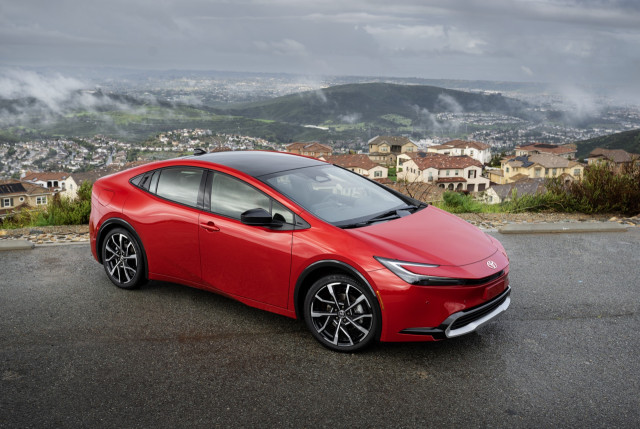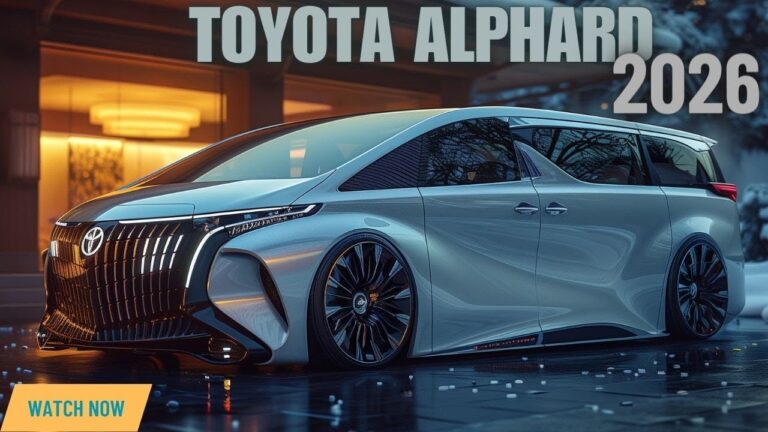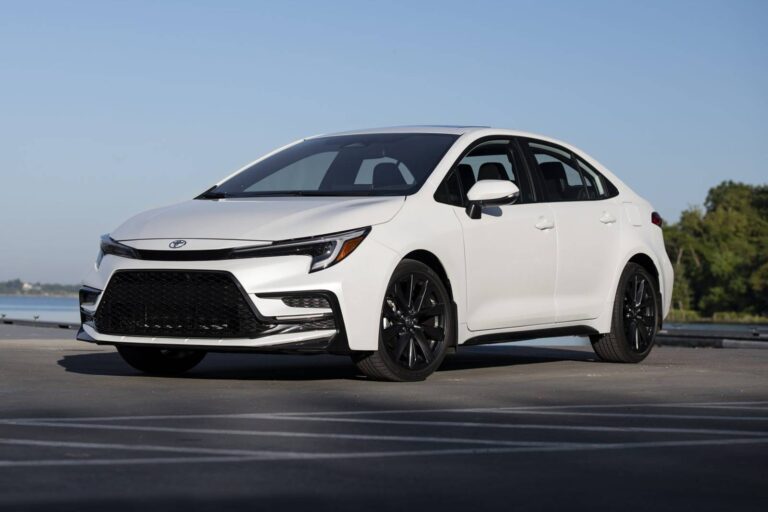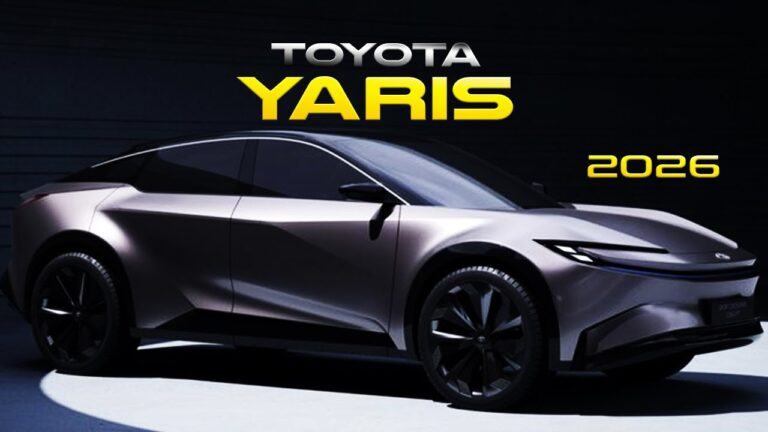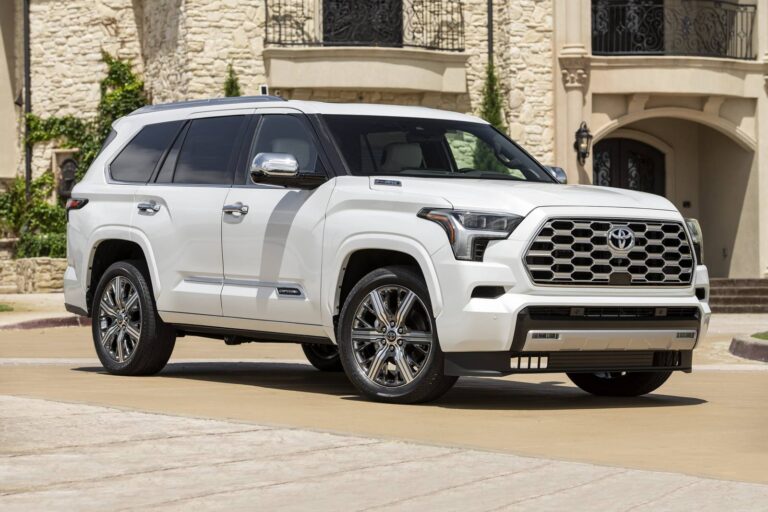The 2026 Toyota Prius Plug-In: A Game-Changer in the Automotive Industry
Get ready to witness the future of sustainable driving with the groundbreaking 2026 Toyota Prius Plug-In. This highly anticipated vehicle marks a significant milestone in the automotive industry, seamlessly blending efficiency, technology, and eco-consciousness.
With its cutting-edge design, advanced features, and exceptional performance, the Prius Plug-In is poised to redefine the hybrid experience. Let’s delve into the details of this remarkable vehicle and explore its transformative impact on the world of mobility.
Table of Contents
Design and Features
The 2026 Toyota Prius Plug-In boasts a sleek and futuristic exterior design that sets it apart from its predecessors. The sharp lines and aerodynamic curves create a sporty and modern look, while the signature LED headlights and taillights add a touch of sophistication. The interior is equally impressive, featuring a spacious cabin with premium materials and a minimalist design. The driver-centric dashboard features a 12.3-inch touchscreen infotainment system, providing easy access to navigation, music, and vehicle settings.
Advanced Features
The Prius Plug-In comes packed with advanced features that enhance both comfort and safety. The infotainment system supports Apple CarPlay and Android Auto, allowing you to seamlessly connect your smartphone and access your favorite apps. The car also features a premium sound system for an immersive audio experience. In terms of safety, the Prius Plug-In is equipped with Toyota Safety Sense 3.0, a suite of advanced driver-assist technologies that includes lane departure alert, automatic emergency braking, and adaptive cruise control.
Competitor Comparison
When compared to its competitors, the Prius Plug-In stands out with its exceptional fuel efficiency and advanced features. The table below provides a detailed comparison of key features:
| Feature | Prius Plug-In | Honda Clarity Plug-In | Hyundai Sonata Plug-In |
|---|---|---|---|
| Electric Range (miles) | 40 | 48 | 30 |
| Fuel Economy (MPG) | 133 | 110 | 93 |
| Infotainment System | 12.3-inch touchscreen with Apple CarPlay/Android Auto | 8-inch touchscreen with Apple CarPlay/Android Auto | 10.25-inch touchscreen with Apple CarPlay/Android Auto |
| Safety Features | Toyota Safety Sense 3.0 | Honda Sensing | Hyundai SmartSense |
Powertrain and Performance
The 2026 Toyota Prius Plug-In Hybrid combines a 1.8-liter four-cylinder gasoline engine with two electric motors, one powering the front wheels and the other acting as a generator. The hybrid system produces a combined 121 horsepower and 105 pound-feet of torque. The Prius Plug-In has an electric-only range of up to 25 miles, and it can travel up to 600 miles on a single tank of gas.
Electric Range and Fuel Efficiency
The Prius Plug-In’s electric range is impressive, especially for a plug-in hybrid. The 25-mile range is enough for most daily commutes, and it can save you a lot of money on gas. The Prius Plug-In also has excellent fuel efficiency. It gets an EPA-estimated 54 mpg in hybrid mode and 133 MPGe in electric-only mode.
Performance Capabilities
The Prius Plug-In is not a sports car, but it has adequate performance for most drivers. The hybrid system provides plenty of power for acceleration and passing, and the car handles well. The Prius Plug-In also has a comfortable ride, making it a good choice for long road trips.
Environmental Impact
The Prius Plug-In boasts an exceptional environmental record, minimizing its carbon footprint and promoting sustainability. Its advanced hybrid system seamlessly combines an electric motor with a gasoline engine, optimizing fuel efficiency and reducing emissions.
Carbon Footprint
Compared to similar vehicles, the Prius Plug-In excels in carbon footprint reduction. Its efficient powertrain significantly lowers greenhouse gas emissions, contributing to cleaner air and a healthier planet.
Emission Reduction
The Prius Plug-In’s hybrid system plays a pivotal role in reducing emissions. By utilizing the electric motor during low-speed driving and leveraging regenerative braking to capture energy, it minimizes gasoline consumption and tailpipe emissions.
Environmental Benefits
The Prius Plug-In’s environmental benefits extend beyond emission reduction. Its lightweight design and aerodynamic shape enhance fuel efficiency, reducing the need for fossil fuels. Additionally, its use of recycled materials in production demonstrates Toyota’s commitment to sustainability.
Market Position and Competition

The Prius Plug-In targets eco-conscious consumers seeking a fuel-efficient and environmentally friendly vehicle. It competes with other plug-in hybrid models like the Hyundai Ioniq Plug-In and the Kia Niro Plug-In Hybrid.
Target Market
The Prius Plug-In appeals to drivers prioritizing fuel economy and sustainability. It suits urban and suburban environments where frequent charging is feasible, enabling extended electric-only driving.
Competition
Hyundai Ioniq Plug-In: Offers a slightly larger battery and all-electric range but a higher price tag.
Kia Niro Plug-In Hybrid: Provides a more spacious interior and a more powerful engine, but with a lower electric-only range.
Pricing and Availability

The 2026 Toyota Prius Plug-In is expected to be priced competitively within its segment. Toyota has not yet released official pricing information, but industry experts estimate the base model to start around £25,000. Higher trim levels and additional options will likely increase the price.
Toyota offers various incentives and promotions for its vehicles, including the Prius Plug-In. These may vary depending on the region and time of year. Potential incentives include low-interest financing, cash rebates, and lease specials.
To compare the pricing of the Prius Plug-In with its competitors, refer to the table below:
| Model | Base Price |
|—|—|
| Toyota Prius Plug-In | £25,000 (estimated) |
| Hyundai Ioniq Plug-In Hybrid | £26,000 |
| Kia Niro Plug-In Hybrid | £27,000 |
| Ford Escape Plug-In Hybrid | £30,000 |
| Jeep Wrangler 4xe | £35,000 |
Conclusion
The 2026 Toyota Prius Plug-In is a significant advancement in the automotive industry, offering a compelling blend of efficiency, versatility, and style. Its cutting-edge technology and impressive performance make it an ideal choice for eco-conscious drivers seeking a practical and sustainable vehicle.
As the world transitions towards a more electrified future, the Prius Plug-In stands as a testament to Toyota’s commitment to innovation and environmental stewardship. Its ability to seamlessly switch between electric and gasoline modes empowers drivers with greater flexibility and peace of mind, making it a practical choice for both daily commutes and longer journeys.
The automotive industry is poised for continued growth in the realm of electrification, with hybrid and plug-in vehicles playing a crucial role in reducing emissions and promoting sustainable transportation. The 2026 Toyota Prius Plug-In is a prime example of this trend, showcasing the advancements and capabilities of modern automotive technology. Its success will undoubtedly inspire further innovation and contribute to the widespread adoption of eco-friendly vehicles.
FAQs
What are the key design features of the 2026 Toyota Prius Plug-In?
The Prius Plug-In boasts a sleek and aerodynamic exterior, featuring sharp lines and a distinctive silhouette. Its interior is designed for comfort and convenience, with spacious seating, premium materials, and an intuitive infotainment system.
How does the Prius Plug-In’s hybrid powertrain system work?
The Prius Plug-In combines a powerful electric motor with a fuel-efficient gasoline engine. It can operate in both electric-only mode for short distances and hybrid mode for extended range. This system delivers exceptional fuel economy and reduces emissions.
What advanced technology features does the Prius Plug-In offer?
The Prius Plug-In is equipped with a suite of cutting-edge technologies, including a large touchscreen display, smartphone integration, and advanced driver-assist systems. These features enhance safety, convenience, and the overall driving experience.
